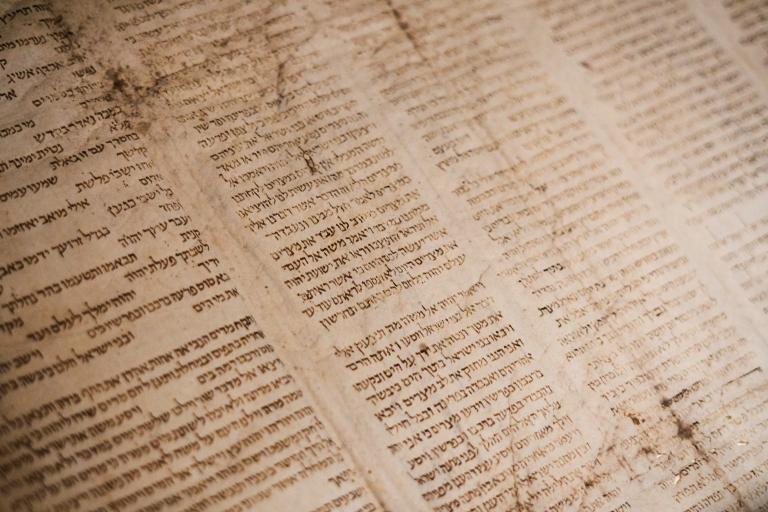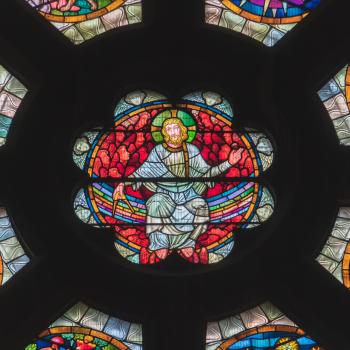
Modern fundamentalist Christians who espouse the idea of inerrancy may not ever imagine that they have much in common with their old heretical foes of the second to fourth centuries, but indeed, the truth is that they have more in common than they would ever want to know. The same impulses that drive many today to seek out ways to harmonize contradictions in the Bible or ignore historical context, are all the same impulses that drove the creation of Gnostic ideas.
What if I told you that conservative Christians who ascribe to the doctrine of inerrancy share something in common with their ancient heretical foe that would shock many?
For the past few weeks, I’ve been taking classes at Yale Divinity School. One of my five courses I’ve been attending is on Gnosticism and their scriptures. The course is being taught by the one and only Harold Attridge and meets about once a week to discuss the forgotten secrets of some long forgotten “scriptures.” So far, we’ve explored various texts, including the Gnostic creation myths contained in the Apocryphon of John and the Hypostasis of the Archons (ie. the Reality of the Rulers). If those names aren’t familiar to you, that’s not surprising. Those two texts were separate attempts by Gnostic Christians (Sethian Gnostic Christians, if you want to be truly technical) to interpret the Hebrew Bible (specifically the book of Genesis). In fact, the two documents are early attempts by Gnostic Christians to interpret the Bible.
What makes the texts so fascinating is how downright odd they seem. Though both texts differ in many ways (and the Apocryphon of John itself differs with its own self depending on what version of it you read), they each promote some fascinatingly confusing ideas. To illustrate, I’ll begin by listing off the ideas that sound foreign and then listing those which are familiar (yet still foreign).
Completely Foreign: The two texts are clear that the world we live in is ruled by an evil god. This god is named Ialdabaōth, which for the Gnostic authors of these texts was another name for Yahweh (the god of the Bible). According to the myths, he falsely believes that he is the only god that exists and after creating angels and other bad heavenly creatures, he told them such and deceived them. In truth though according to these texts, there is a higher god whose offspring either inadvertedly was responsible for Ialdabaoth (ApJn) or is the one divinely in control of everything (RR).
Vaguely Familiar: Ialdabaōth and the angels/archons (rulers) created man and we are the result of this evil creation. However, we are not an evil creation because unbeknownst to Ialdabaōth, the very idea he had for creating humanity was implanted by the greater power (Barbello) and thus, humanity has a better source. In the Apocryphon of John, the serpent in the Garden of Eden is trying to, independent of Ialdabaōth, trick Adam and Eve. In Reality of the Rulers, the serpent is actually Barbello in disguise, attempting to help save Adam and Eve from the evil god who demands their worship. The myths report how the evil god Ialdabaōth tried to destroy humanity with a flood. In Reality of the Rulers, the myth is different, now stating that the god of the Bible, Yahweh (here named Sabaōth), is the son of the evil Ialdabaōth, but that Sabaōth rebelled against his evil father’s ways after the flood, redeeming his spot as a true divine being.
If that sounds like a bunch of mumbo jumbo that rolled into crazy town on the loco express, you’re not alone. Rest assured, even students at Yale stare at such texts dumbfounded. How in the world did these early Christians (heterodox or not) get such ideas? Why would they seemingly hold tight to the book of Genesis when they seemed to be undoing all of it?
Then, while reading Nicola Lewis’ stupendous textbook “Introduction to ‘Gnosticisim’: Ancient Voices, Christian Worlds” (published by Oxford), I came across the following notation that left me speechless. Nicola Lewis writes in specific regard to Reality of the Rulers, that the author (and some other Gnostic writers) had the following “ground rules or basic principles,” among these:
As sacred scripture, the text of Genesis cannot have mistakes in it, so any logical problems with flow or sequence need to be reconciled or explained without saying “maybe the author of Genesis made a mistake.” If there are two stories of Adam and Eve’s creation, for instance, then Adam and Eve were actually created twice, not once. (This, by the way, is an example of pshat: a literal reading of the text which reveals a surprising, hidden meaning). (140)
Gnostic Christians were, of all things, just like Fundamentalist Christians: believers in inerrancy. That’s right, the varied and diverse heterodox group who gave us such great hits as the Gospel of Judas were early proponents of the doctrine of inerrancy. Who would have guessed?
In both of these documents, there is a strong desire to harmonize difficult passages and fix contradictions.
With regard to the other text, the Apocryphon of John, Lewis references a number of instances in which the Gnostic author writes that “It is not as Moses wrote.” According to some recent scholars such as Luittikhuizen, the statements are not intended to convey the idea that Genesis is flawed, but rather suggests that: “The author of ApJn rejects a literal reading in place of an allegorical or metaphorical reading” (164).
But how could a Gnostic Christian believe that Genesis was inerrant but also believe that a literal reading was wrong? Well, simple: they assumed that the information was correct but that the interpretation or perspective given by Moses (the presumed author) was incorrect.
One can surmise that if a Gnostic Christian believed that Ialdabaōth was an evil false god who told Moses what happened, he did so according to Ialdabaōth’s own perspective and as such, while the information within Genesis might be broadly true, it is slanted or biased. Thus, the author of the Apocryphon of John holds tight to Genesis (due to a belief in inerrancy) but feels the need to correct it (due to a belief in a broader reading).
The inerrancy they believed in, like modern fundamentalist Christians, was one of belief. So if the Bible reported that Yahweh said something, they didn’t doubt that he said it (inerrancy!) but they did doubt whether he was right (not literal). They accepted that a story in Genesis truly happened (inerrancy!) but they did not assume that the understanding of it from Genesis was right (not literal).
But why, we might ask, did they believe those things that would lead them to not read it literally? Well, inerrancy! Unlike modern fundamentalist Christians today, the Gnostic Christians back then didn’t only believe that the Bible was inerrant… they also believed that the Platonic Mythology described in Plato’s Timaeus was also inerrant! As Nicola Lewis writes, “Put simply, the Timaeus helped to solve some of Genesis’s problems without readers resorting to the conclusion that it was full of errors” (141).
Now you can begin to understand perhaps why Gnostic Christians seem so… weird to us. They accepted two entirely different mythologies as inerrantly true and felt the need to harmonize them both and in so doing, created entirely new religious beliefs that would seem foreign to anyone that wasn’t from the same background.
If Plato had many gods, that was a truth that Genesis had to be harmonized to (the solution: Yahweh is one of many gods). If Genesis said that the world we lived in was fallen but Plato said it was fantastic, then Plato had to be harmonized (the solution: an evil god created us).
In other words, as hard as it might be to imagine, the Gnostic Christians who retold Genesis were attempting to be faithful to two different traditions and forge a middle ground. There was indeed a method to what we now think (and many early Christians thought) was madness.
Modern fundamentalist Christians who espouse the idea of inerrancy may not ever imagine that they have much in common with their old heretical foes of the second to fourth centuries, but indeed, the truth is that they have more in common than they would ever want to know. The same impulses that drive many today to seek out ways to harmonize contradictions in the Bible or ignore historical context, are all the same impulses that drove the creation of Gnostic ideas.
Evangelicals and other groups that espouse such ideas should carefully consider whether they are merely repeating the same actions of earlier Christian groups, groups who they deeply wish to not emulate. Do they perhaps, at times, fall into the same practice of the Gnostics in using the doctrine of inerrancy as a way to control what the Bible can or cannot say. And in so doing, are they guilty of the very heresy they condemn?
 Matthew J. Korpman is a minister-in-training and published researcher in Biblical Studies and Church History. Pursuing his Masters at Yale Divinity School, he did his undergraduate work at the H.M.S. Richards Divinity School, where he completed four degrees in fields such as Religious Studies, Philosophy and Archaeology. He is an active member of the Seventh-day Adventist church whose research interests include everything from the Apocrypha to the Apocalypse.
Matthew J. Korpman is a minister-in-training and published researcher in Biblical Studies and Church History. Pursuing his Masters at Yale Divinity School, he did his undergraduate work at the H.M.S. Richards Divinity School, where he completed four degrees in fields such as Religious Studies, Philosophy and Archaeology. He is an active member of the Seventh-day Adventist church whose research interests include everything from the Apocrypha to the Apocalypse.












